Eboa Itondo: “One of the biggest challenges lies in institutional staffing practice”
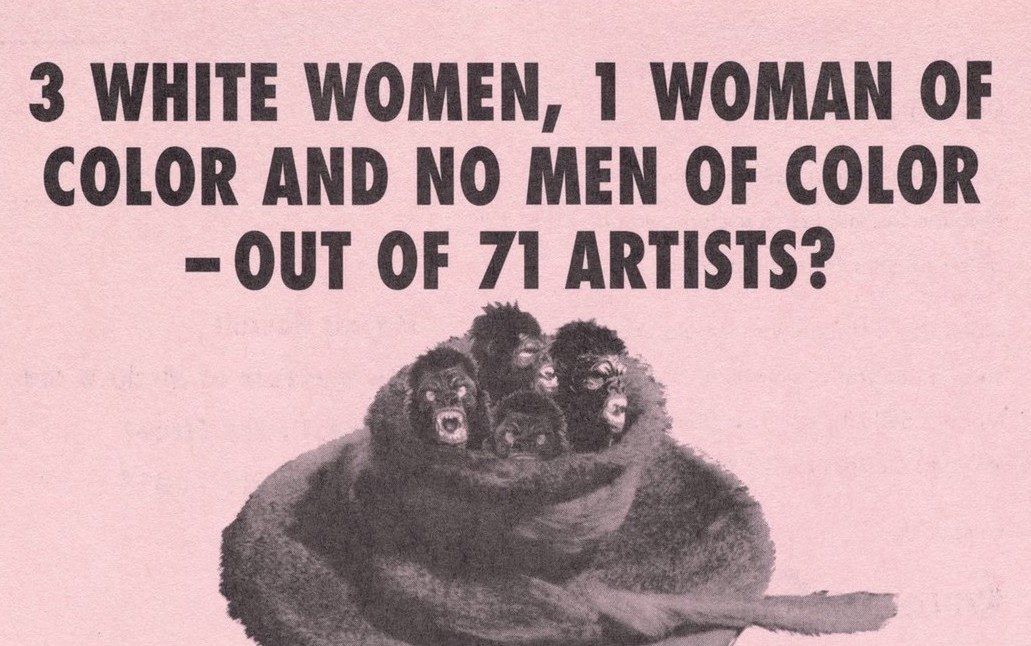
11 October 2022
Magazine C& Magazine
Words Mearg Negusse
5 min de lecture
C& talked to the recently appointed head of the Graphics Collection at Museum Ludwig about her strategies, visions, and wishes.
Contemporary And: Can you tell us about your professional background and how you developed your curatorial practice?
Eboa Itondo: I studied cultural studies and dealt with interfaces between design, craft, and art. I consciously pursued an interdisciplinary approach right from the start. In my final year of study, I worked on a reappraisal project documenting the private estate of the architect, folk art collector, and textile designer Alexander Girard. This marked the beginning of my museum collection socialization. Aspects of transculturality ran through Girard’s family biography as well as his work, which really appealed to me. His private and contract interior designs and his furniture and textiles designs were largely inspired by colors, materials, and production techniques he experienced while travelling and expanding his private folk art collection.
Through my exploration of folk art and how it found its way into the commercial, public sphere through design, I developed a desire to contribute to a more global narrative of art and cultural history through my work. For me, this also includes the introduction and application of postcolonial perspectives in institutional museums and collections.
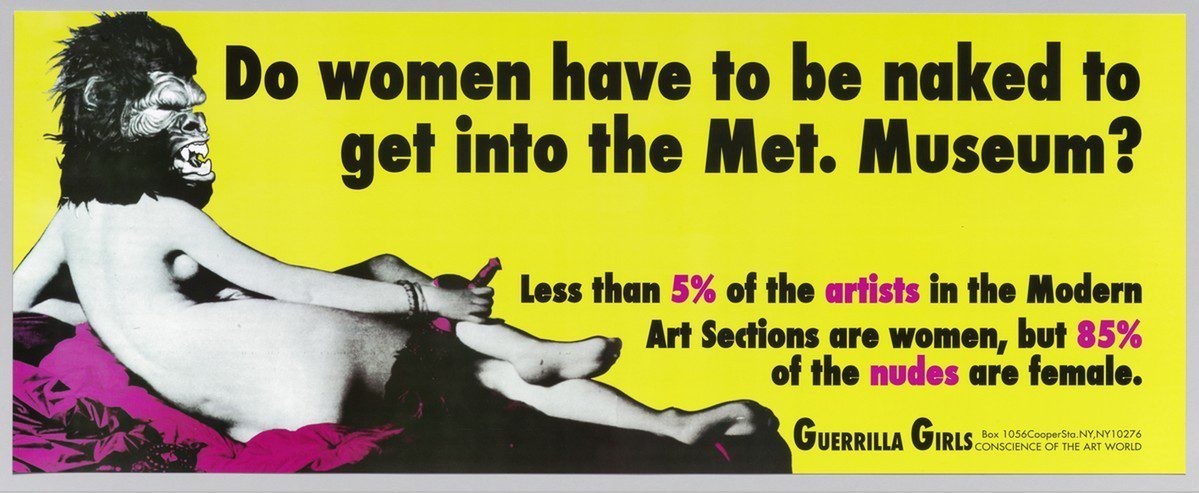
Guerrilla Girls, Do Women have to be Naked to Get Into the Met Museum?, 1989.Paper, digital print, 28 x 71 cm. © Rheinisches Bildarchiv Köln. Courtesy of the Museum Ludwig, Grafische Sammlung,
C&: Since June of this year, you have been the new head of the Graphics Collection at Museum Ludwig. Congratulations! What are the core themes and questions that will accompany and affect you in your new position?
EI: Thank you very much! Since I’m new at Museum Ludwig, I think that central themes and questions will evolve and be refined as I explore and learn more about the collection. As a cultural scientist, I might move a bit more freely through the classical canon of Western art history. Generally I am curious to explore what a twenty-first-century graphics collection could be – whether an opening is possible and if so, what it might look like. Right now a central question that accompanies and moves me professionally concerns the motivations behind the collection.
Another important theme and concern is, of course, the development of a more diverse and inclusive collection strategy. This process already began before my time at Museum Ludwig. By diversification I mean not only adding the positions of international artists, but promoting the representation of missing or less visible local perspectives.
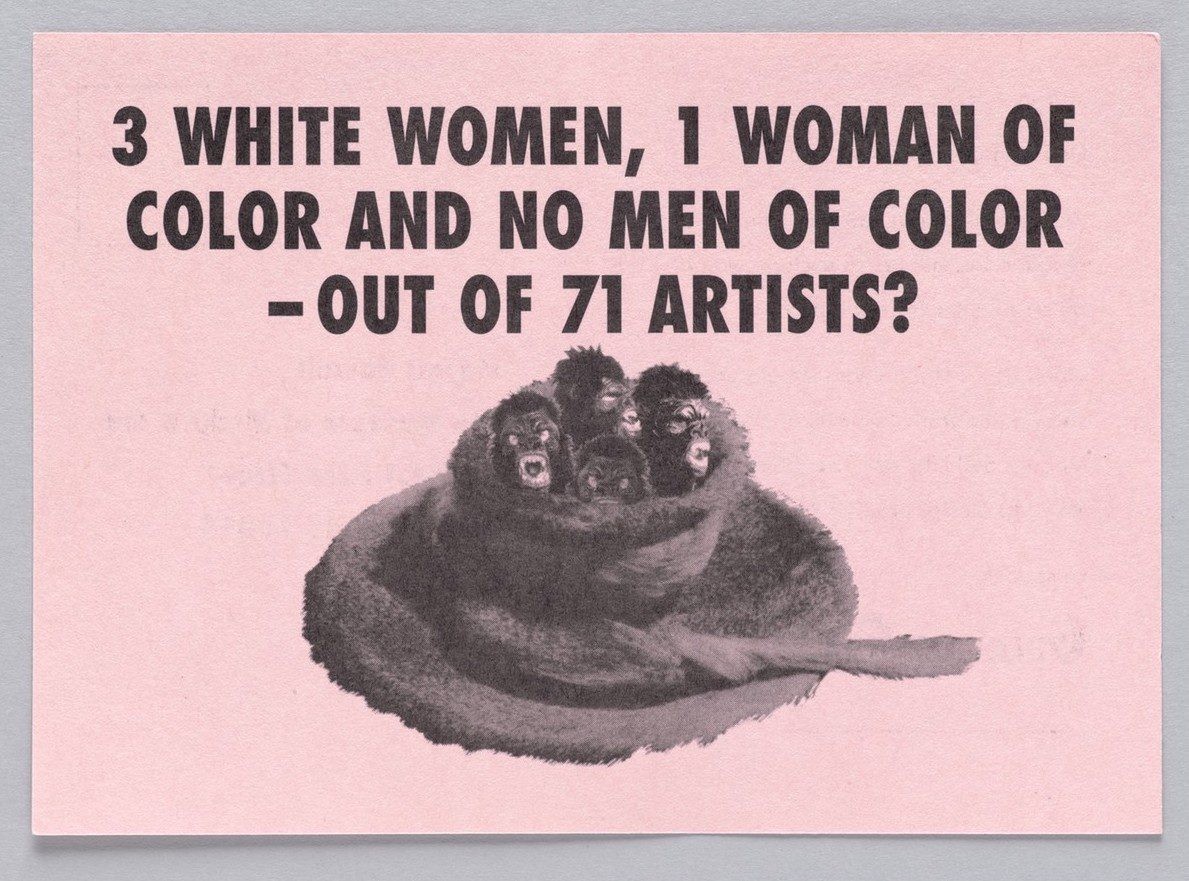
Guerrilla Girls, 3 White Women, 1 Woman Of Color And No Men Of Color-Out Of 71 Artists?, 1997. Paper, Offset print, 10,7 x 15 cm. © Rheinisches Bildarchiv Köln. Courtesy of the Museum Ludwig, Grafische Sammlung
C&: In recent years, Museum Ludwig has opened up its collection to the expertise of external art historians and scholars from various fields. I’m thinking, for example, of the exhibition seriesHERE AND NOW, but also of the research work ofJanice Mitchell, which resulted in the exhibition Mapping the Collection. What opportunities or challenges do you see in such reappraisals of existing museum collections?
EI: Contributions to the reappraisal of the museum collection are of great value to my work. The intervention of the Guerilla Girls in the museum’s fortieth birthday clearly exposed voids and over- and under-representations in its collection. I think it’s great that the museum is open for institutional critique and deals with it in a transparent way. Since I recently joined the team, I benefit from reappraisals because they enable me to gain a quick general overview. They convey what is already there, but also offer clear starting points for the further development of the collection in terms of diversity and inclusivity.
To me one of the biggest challenges lies in institutional staffing practice. There need to be more and more diverse researchers who are employed long-term, not as one-offs or on a project basis. There are other museums in Germany who are slowly opening up more, but there is still a long way to go.
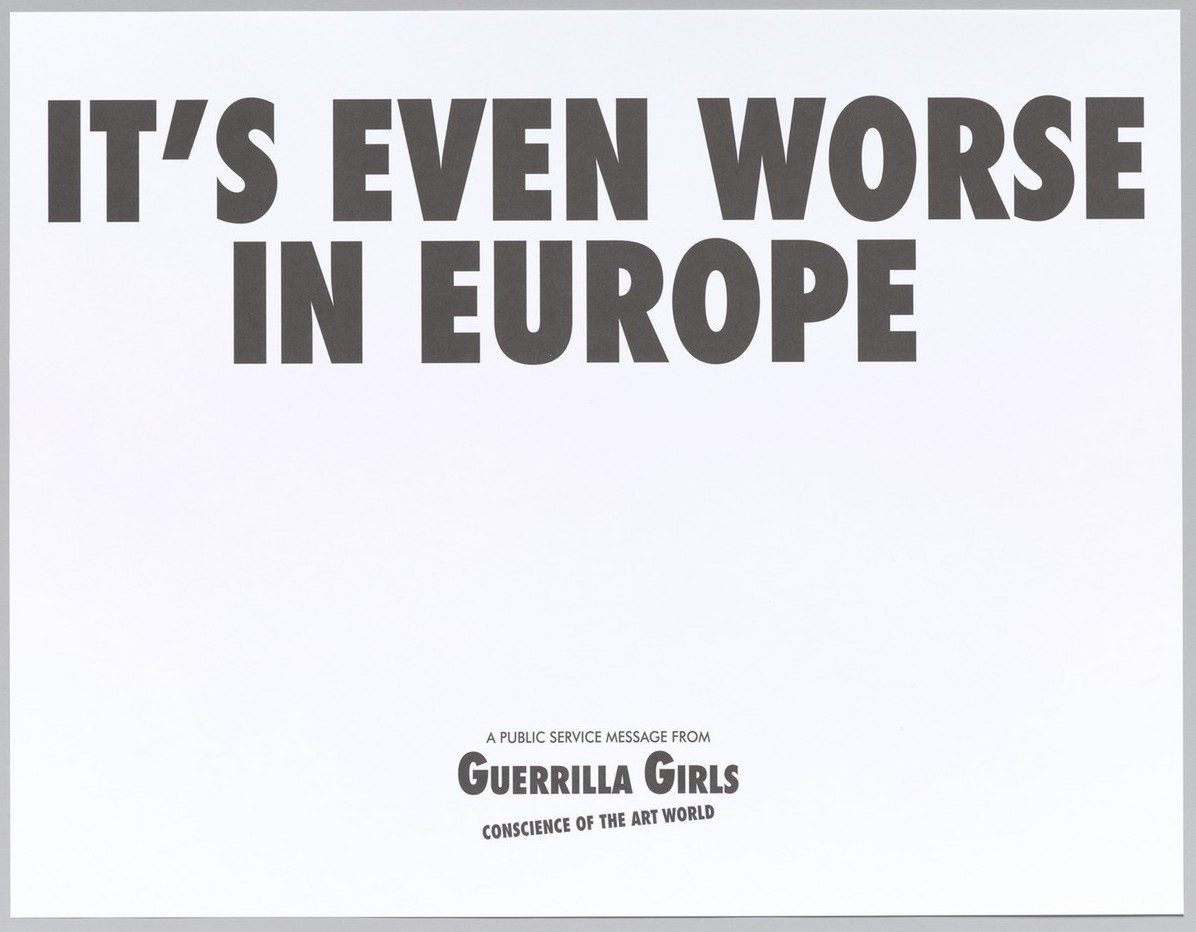
Guerrilla Girls, It’s Even Worse In Europe, 1986. Paper, Offset print, 55,9 x 43,1 cm. © Rheinisches Bildarchiv Köln. Courtesy of the Museum Ludwig, Grafische Sammlung
C&: What methods and practices will you use to access the holdings of the Graphic Collections in a way that reflect your interests?
EI: For a collection that comprises more than 13,000 graphics, it is important to have a strategic approach, but sometimes one should also let oneself be guided by the collection. I am approaching it gradually according to various parameters and depending on different subjects, some of which are constantly evolving the more I learn about it. In current exhibition projects, for example, Expressionism and its representatives are being examined from a postcolonial perspective. Having touched on this subject in my last exhibition project, I was sure that this would feed into my approach. My focus was drawn by less visible female positions such as Rosa Schapire, who was of Jewish decent, one of the first woman to get a PhD as an art historian in Germany and a member of the Brücke. Now I am planning a small presentation of the museum’s Schapire works as an addition to the exhibition space displaying the Expressionism collection.
On a larger international scale, the scale of narrating and mediating a global art history, I would like to extend the view to other art movements that took place at about the same time, such as the Harlem Renaissance in the US.
C&: What are you working on right now? Can you give us a preview of your next exhibition or project?
EI: Next up is a cooperation event between the Afrika Film Festival Cologne and Museum Ludwig on the topic of Afrofuturism. We will be showing short films by Jeremy Ngatho Cole, Akinola Davies, Adeyemi Michael, and Elliot Barnes-Worrell. During the preparations I have been looking more closely at comics and graphic novels surrounding Afrofuturistic narratives. The Dailies series started by Kerry James Marshall in the 1990s, for example, represents an intersection between the mediums of art and comics.
Also, next year marks the fortieth anniversary of Pablo Picasso’s death. A multitude of international events and exhibitions will commemorate him. As the museum has one of the world’s largest Picasso holdings – the Graphics Collection has all his print series – I am planning a presentation of his late work that will focus primarily on the body and its social and political consideration.
Interview by Mearg Negusse.
Plus d'articles de
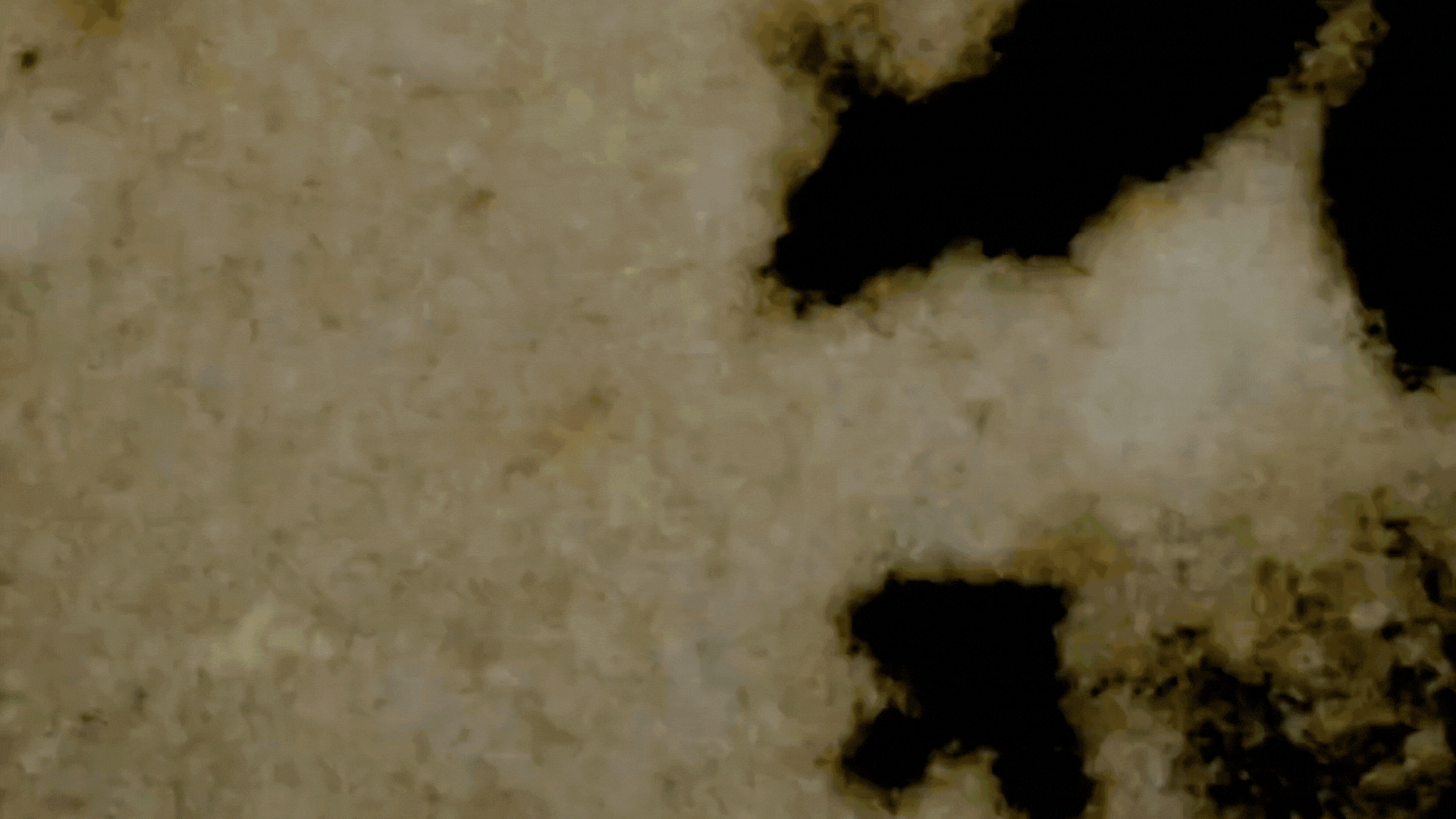
Fantômes et images en mouvement : le Black Atlas d’Edward George

Confronting the Absence of Latin America in Conversations on African Diasporic Art

On Exile, Amulets and Circadian Rhythms: Practising Data Healing across Timezones
Plus d'articles de
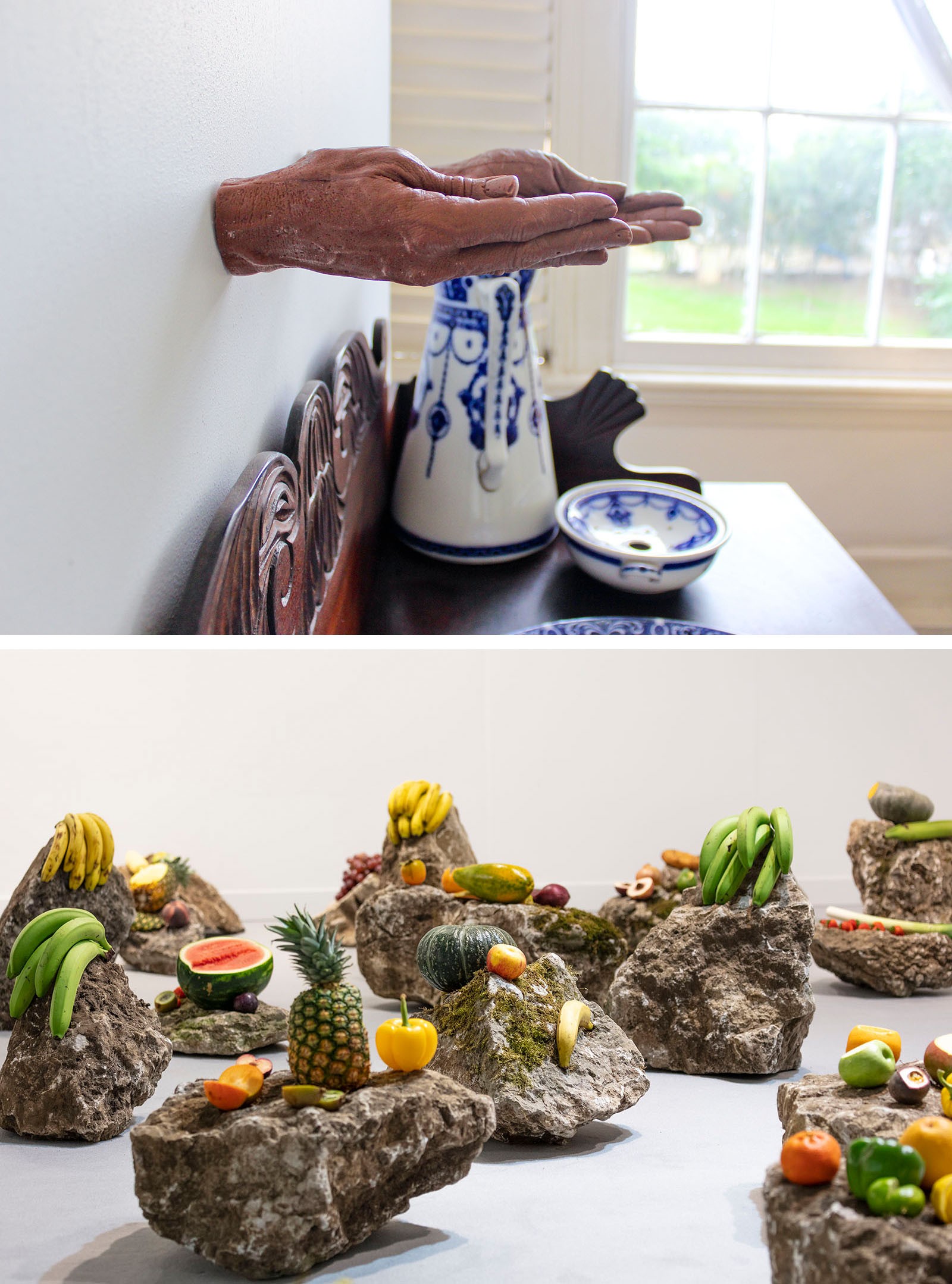
2025 in Review

Yina Jiménez Suriel y Raphael Fonseca son los directores artísticos de la Bienal Sequences de Islandia
